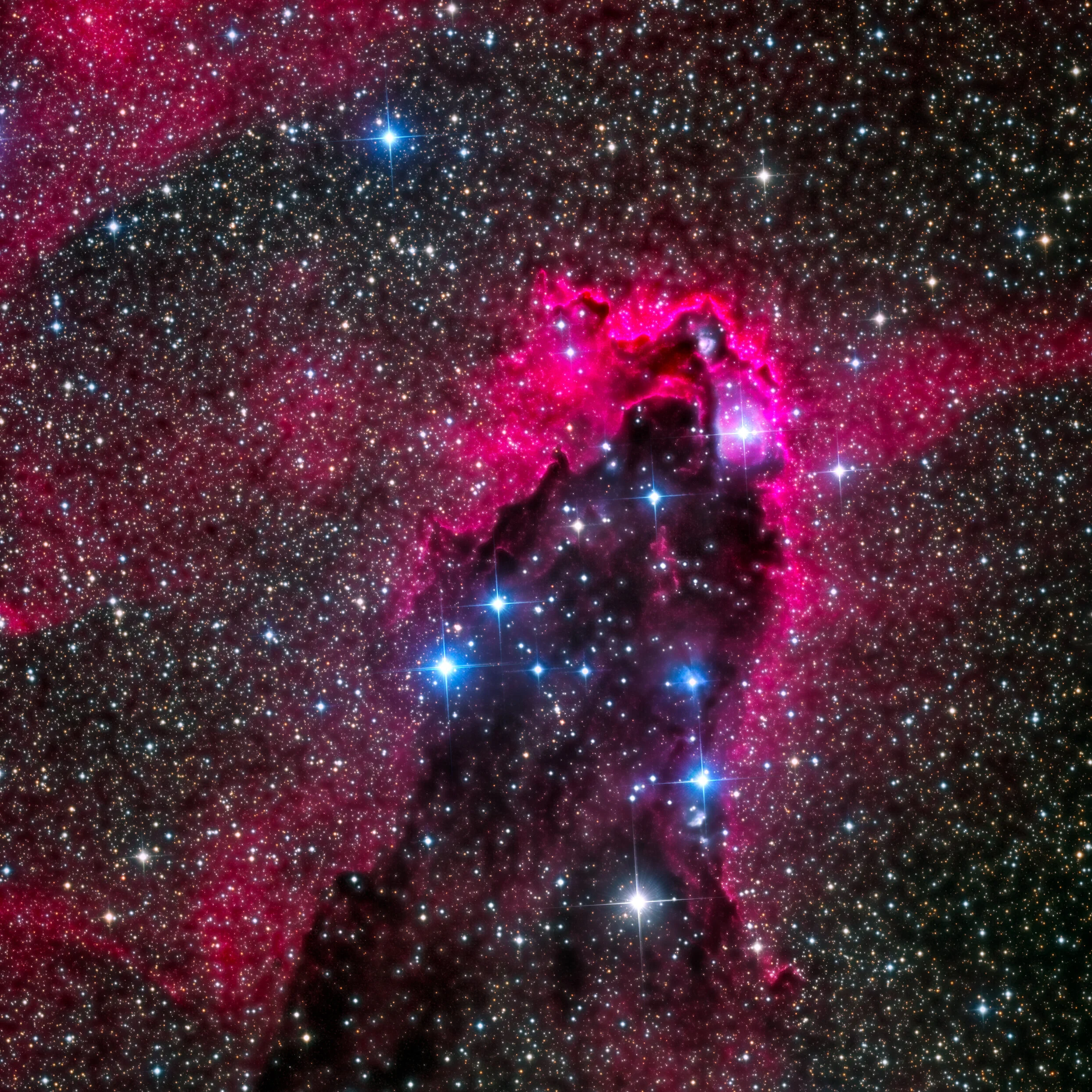Dark Nebula in Scorpius
Image Description and Details :
An ominous dark nebula rises against the a bright star field and glowing gasses, alongside the tail of the Scorpius constellation. The structure spans almost 40 light years and dust and gas collapse to form stars within this dark nebula. Also known as a cometary globule, the cloud is shaped by ultraviolet radiation from the very hot stars in NGC 6231. The ultraviolet light also illuminates the reddish glow of hydrogen gas. Hot stars embedded in the dust can be seen as bluish reflection nebulae. This dark nebula, NGC 6231, and associated nebulae are about 5,000 light-years away.
Telescope : Planewave CDK 17 F6.8
Camera : SBIG STXL 11002
Mount: Software Bisque Paramount ME
Pixel scale : 0.63 arcsec/pixel
FOV : 42 x 29 arcmins
Filters :LRGB & Ha
Integration: 28hrs
Observatory : El Sauce
Software: PixInsight & Photoshop
Copyright: vikas chander
AAPOD2 Title: Dark Nebula in Scorpius
AAPOD2 Page Link: https://www.aapod2.com/blog/Ngc6231
Submit Your Photo!


